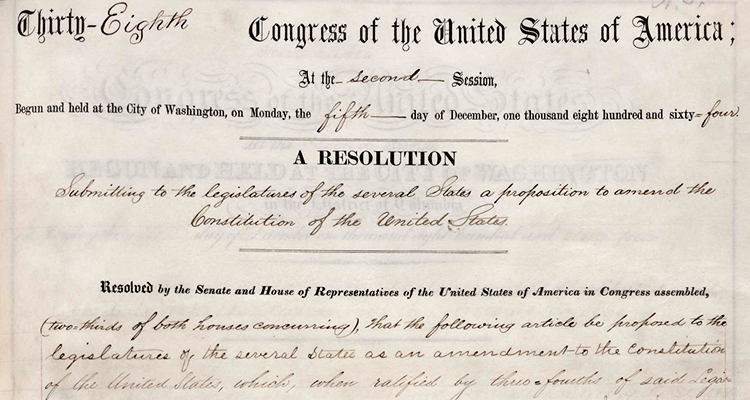My question is on the 13th Amendment. There is a notion that the 13th amendment had 20 sections, and it may very well have, but was never ratified. There are more and more people suggesting that it was ratified. I want clear proof to show that the 13th amendment with 2 sections is the only legally ratified version. So I need evidence of dates and times when the 20 sections officially failed to make it into the US Constitution.
Ron Hopkins-Bey
Legislative Assistant
To Representative Cherelle L. Parker
200th Legislative District
1536 E. Wadsworth Ave.
Philadelphia, Pa. 19150
? ? ?
Dear Mr. Hopkins-Bey
I have been trolling through the internet and have an idea of what brought on this question. Various contemporary websites with their own provocative agendas and axes to grind are trying to insist that the Thirteenth Amendment as ultimately agreed upon in both the Senate and the House is not really valid. Be that as it may, historically speaking the two-section amendment that Abraham Lincoln managed to get passed by both bodies before Confederate states rejoined the Union (and potentially making its passage impossible) is the one that is practiced. Historically speaking, the documents kept on that process back in 1864-65 are available through the National Archives and the Library of Congress (examples are attached).
The bottom line on that difficult process (which was dramatized in Steven Spielberg’s film Lincoln) is that an alternate 13th Amendment was proposed but was voted down. The links attached below are from a book documenting the process show the beginning and the end of the discussion in the US Senate, whose outcome was that the alternative version was “determined in the negative.”
Two general rules of thumb are useful in tracing political history through the ages. First, the closer you get to the primary source, the better. Second, if someone of this century foists a “now it can be told” piece of revisionist history, the first question you might ask is “why?” before double-checking the “how.”
Sincerely,

Jon Guttman
Research Director
World History Group
More Questions at Ask Mr. History
Don’t miss the next Ask Mr. History question! To receive notification whenever any new item is published on HistoryNet, just scroll down the column on the right and sign up for our RSS feed.





